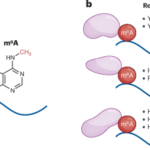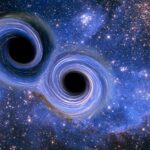Neutrinos are one of the most abundant particles in the universe, with billions passing through your body at this very moment. Despite their abundance, they are difficult to detect because they rarely interact with other particles. Scientists currently recognize three types of neutrinos: electron, muon, and tau, which are each related to their corresponding particles. These particles have a very small amount of mass, which allows them to change into different “flavors” of neutrinos. This process is known as neutrino oscillation. However, for years, researchers have been searching for evidence of a fourth type of neutrino called “sterile neutrino” to explain discrepancies in the recorded number of neutrinos emitted by nuclear reactors.
The idea of the sterile neutrino came about because, for a long time, scientists observed that the number of electron neutrinos coming from nuclear reactors was lower than the number they had predicted. Some scientists proposed that these electron neutrinos were changing into a fourth type of neutrino called the sterile neutrino. This neutrino would be different from the other three types because it would not interact with matter through the weak nuclear force, making it extremely difficult to detect.
Many experiments have been conducted to search for the sterile neutrino, but so far, none have been able to detect it. The latest experiment, conducted by researchers at the Max-Planck-Institut für Kernphysik (MPIK) and the Laue-Langevin Institute in Grenoble, France, used a neutrino detector called STEREO to see if they could detect sterile neutrinos. Their results were published in the scientific journal Nature.
The experiment was designed to detect a change in the energy spectrum of electron neutrinos over time. The idea was that if the sterile neutrino existed, lower-energy electron neutrinos would change into it more quickly than higher-energy ones, resulting in a change in the energy spectrum of the remaining electron neutrinos. However, the STEREO detector found no change in the energy spectrum, ruling out the existence of the sterile neutrino as an explanation for the discrepancy in the number of neutrinos observed.
Instead, the researchers suggest that the most likely explanation for the discrepancy is errors in the data used to predict the number of neutrinos. The data used to make these predictions is based on measurements of the radioactive decays that occur in the nuclear reactor. The researchers believe that the uncertainties in these measurements were underestimated, resulting in inaccurate predictions of the number of neutrinos.
This is not the first time that the existence of the sterile neutrino has been called into question. Many other experiments have been conducted, and none have been able to detect it. The lack of evidence for the sterile neutrino raises serious questions about its existence. The researchers at MPIK and the Laue-Langevin Institute believe that it is time to re-evaluate the evidence for the sterile neutrino and to consider alternative explanations for the discrepancy in the number of neutrinos observed.
Neutrinos are fascinating particles, and scientists are still trying to understand many aspects of their behavior. These experiments are helping to shed new light on the properties of neutrinos and their role in the universe. The recent results from the STEREO experiment, along with other experiments, suggest that the sterile neutrino does not exist and that the discrepancy in the number of neutrinos observed is likely due to errors in the data used to predict the number of neutrinos. However, research on neutrinos is ongoing and it is possible that new discoveries may be made in the future.
Don’t keep this groundbreaking discovery to yourself, share with your friends and colleagues, leave a comment and subscribe to stay updated on the latest advancements in neutrino research.
#neutrinos #nuclearphysics #particlephysics #scienceresearch #discovery











